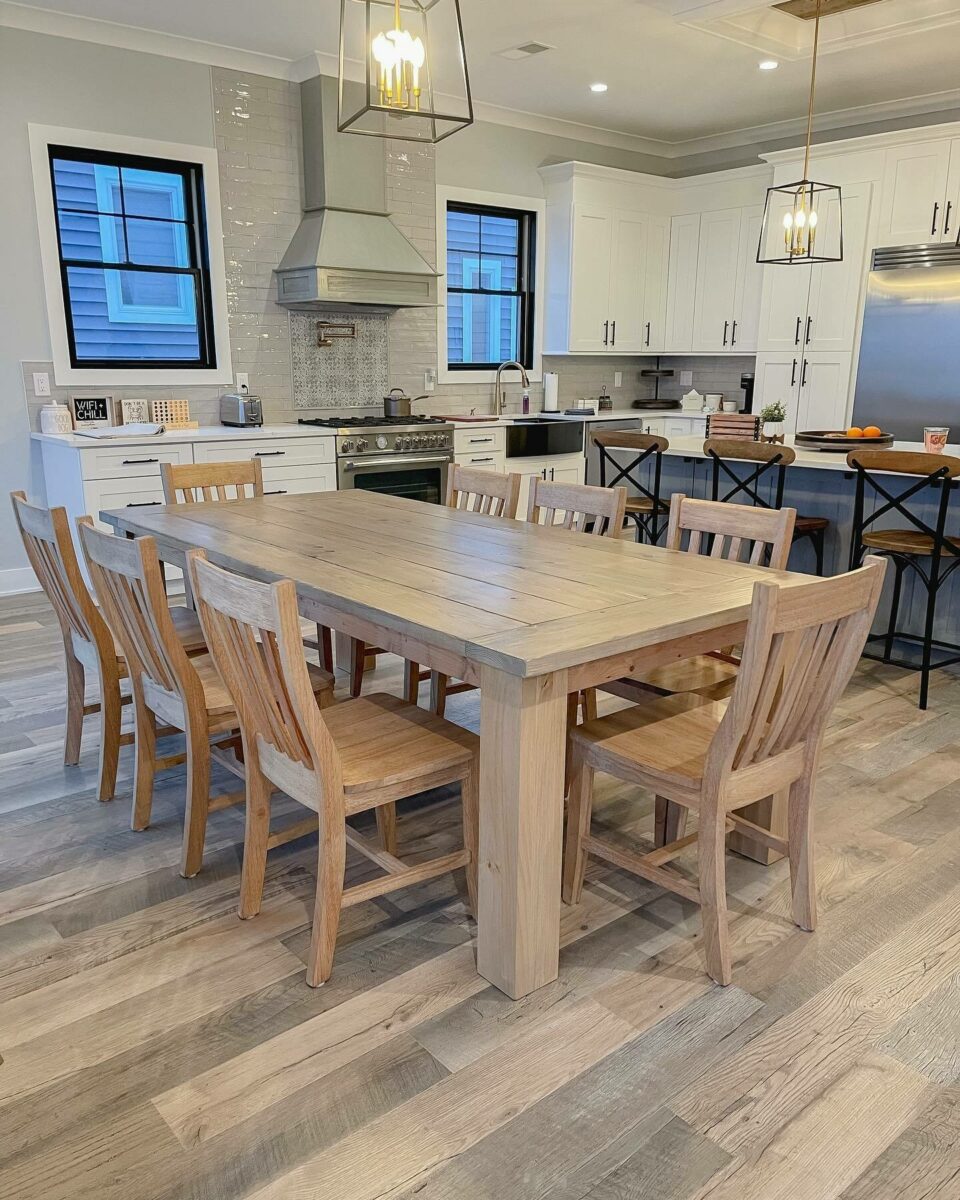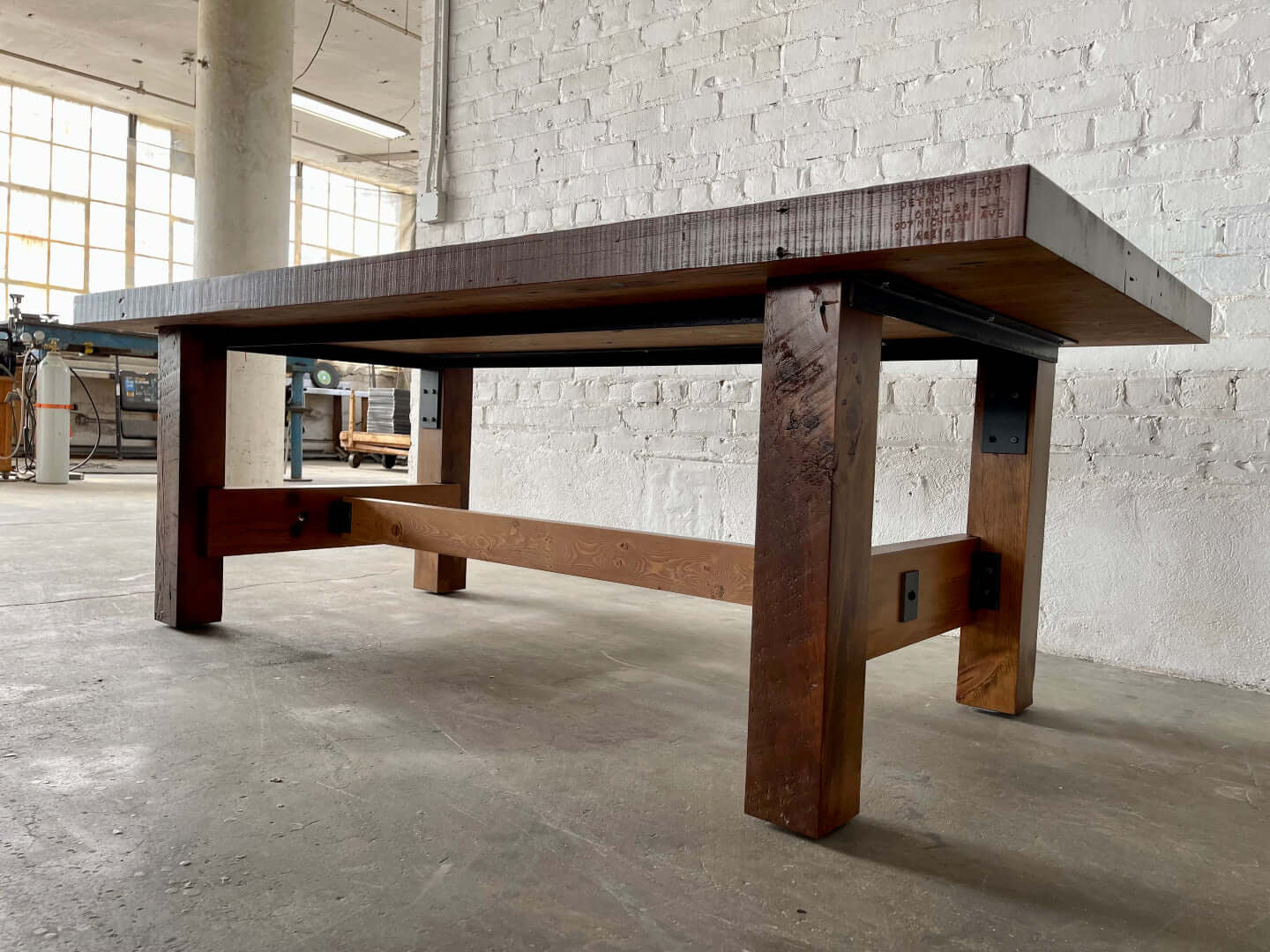What to Take Into Consideration When Selecting Eating Table Legs Wood for Your Home.
When selecting wood for dining table legs, a number of important aspects necessitate mindful consideration to ensure both functionality and aesthetic appeal. The type of wood chosen can considerably influence the table's sturdiness, stability, and general style, while the maintenance requirements may affect long-term usability.

Importance of Timber Kind
When selecting eating table legs, the selection of wood type plays a critical role in figuring out both aesthetics and sturdiness. Various timber species provide differing degrees of resistance, toughness, and weight to wear, which can considerably affect the capability and long life of the table. Woods such as cherry, oak, and maple are often preferred for their robust nature and capability to stand up to everyday usage. These timbers not just supply architectural honesty yet additionally stand up to scrapes and damages much better than softer options.
Alternatively, softer timbers like poplar or yearn, while much more cost-effective, might not supply the exact same level of resilience and might call for more frequent upkeep or substitute. The wood kind likewise influences the table's capacity to withstand environmental variables such as moisture and temperature variations. Moreover, the selection of timber can impact the ease of staining and completing, which can be essential for achieving the preferred look.
Aesthetic Factors To Consider
The visual charm of table legs substantially adds to the general visual of the dining room. Dining Table Legs Wood. When selecting timber for eating table legs, the grain shade, coating, and pattern are crucial elements that can improve or take away from the area's design. Different timber kinds exhibit differing structures and tones; for example, oak provides a timeless appearance with popular grain, while walnut uses an abundant, dark elegance
Furthermore, the form of the legs plays a crucial role in defining the table's personality. Streamlined, minimal legs can create a contemporary feel, while a lot more luxuriant, turned legs evoke standard beauty. The design of the legs should harmonize with existing furniture and the general style of the space, whether it be rustic, modern-day, or transitional.
It is additionally essential to consider exactly how the legs engage with various other furnishings items, consisting of sideboards and chairs. A natural style not just raises the eating experience however likewise adds to the home's general visual comprehensibility. Eventually, the choice of dining table legs must be a thoughtful decision that shows personal taste while ensuring aesthetic consistency within the area.

Sturdiness and Security
Durability and stability are essential consider the choice of table legs, as they straight affect the longevity and safety and security of the furnishings. When choosing timber for eating table legs, one have to consider the intrinsic properties of various wood types. Woods, such as oak, maple, and cherry, are typically liked for their toughness and resistance to put on, making them ideal for high-traffic eating locations.
In addition to the sort of wood, the construction method also plays a considerable function in the general stability of the table. Legs that click this link are sturdily built, either with conventional joinery methods or contemporary engineering methods, will provide enhanced assistance and prevent tottering. It is necessary to review the density and style of the legs; thicker legs are usually extra steady and can stand up to higher weight.
Furthermore, the environmental problems in which the table will certainly be utilized can affect resilience. Timber that has actually been appropriately treated for moisture resistance will certainly do better in humid settings. Eventually, selecting the right mix of long lasting wood and stable building and construction will ensure that your eating table stays a risk-free and functional focal point in your home for years ahead.
Maintenance Needs
Choosing table legs made from long lasting wood is simply the beginning; recognizing maintenance requirements is similarly important to maintain their appearance and capability. Different timber types call for varying degrees of care, so it is necessary to know what is required for your particular option.
Regular cleansing is fundamental; utilize a soft, wet fabric to get rid of dust and particles. Avoid severe chemicals that can harm the finish. For timber coatings like varnish or lacquer, regular brightening with furniture wax can improve sparkle and offer a safety layer versus scratches.
Preventative actions are important (Dining Table Legs Wood). Usage coasters and placemats to prevent straight contact with hot or damp items, which can warp or discolor the timber. In addition, consider putting really felt pads under the legs to stop scratches on your flooring and look these up lower endure the wood
Humidity control is one more considerable variable; maintaining a stable atmosphere assists to protect against bending and cracking. Think about utilizing a humidifier or dehumidifier as needed. if your eating location is vulnerable to variations in temperature level and dampness.
Spending Plan and Price Variables
When planning to purchase eating table legs, recognizing spending plan and price variables is necessary to make an informed decision. The sort of timber picked for the legs substantially affects the general price. Woods, such as oak or walnut, often tend to be a lot more costly than softwoods like yearn, due to their sturdiness, aesthetic appeal, and scarcity. In addition, take into consideration More Help whether you are choosing or purchasing pre-made legs for custom layouts, as modification commonly incurs higher prices.
Labor and workmanship also play a crucial function in the total cost. Handmade or artisan-crafted legs might carry a costs price tag, showing the ability and time purchased their production. It's vital to assess the equilibrium in between high quality and price; investing a lot more ahead of time can result in a longer-lasting item that requires less upkeep over time.
Final Thought
In recap, selecting the suitable timber for dining table legs necessitates cautious factor to consider of various aspects, consisting of wood type, aesthetic allure, resilience, maintenance, and spending plan constraints. The choice of hardwoods such as oak and maple can improve both stamina and aesthetic charm, while softer timbers might be extra affordable yet much less long-lasting. Ultimately, a well-informed decision regarding material selection will contribute to the overall functionality and longevity of the dining table, ensuring a valuable investment for the home.
When selecting timber for eating table legs, numerous critical variables necessitate mindful factor to consider to make sure both performance and aesthetic appeal.When selecting eating table legs, the selection of timber type plays an important role in determining both visual appeals and resilience. When selecting timber for eating table legs, the grain shade, surface, and pattern are pivotal components that can take away or improve from the room's layout. When selecting wood for eating table legs, one need to consider the inherent buildings of different wood kinds.In summary, picking the proper wood for eating table legs necessitates mindful consideration of numerous aspects, including timber type, visual appeal, sturdiness, spending plan, and maintenance restraints.